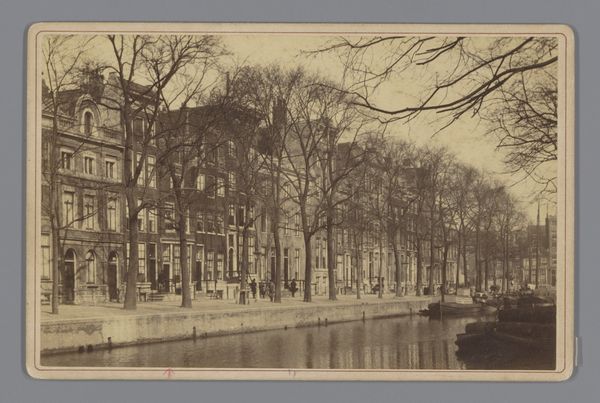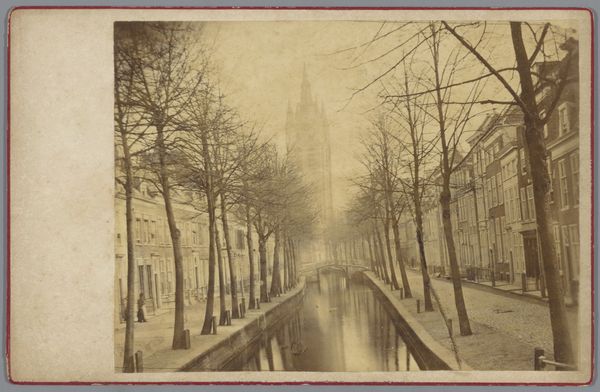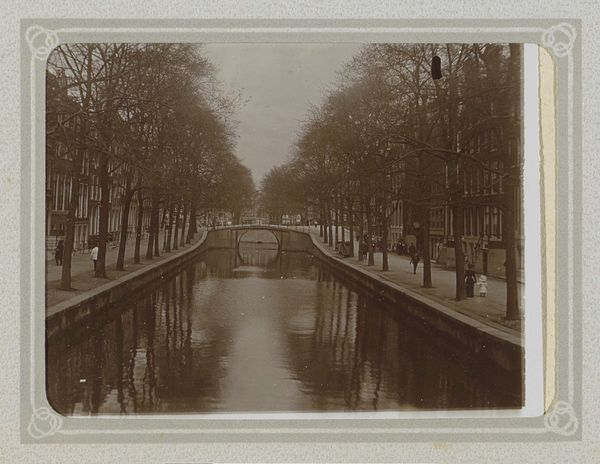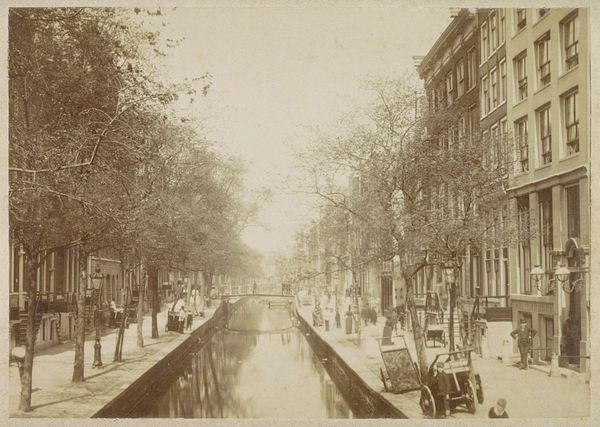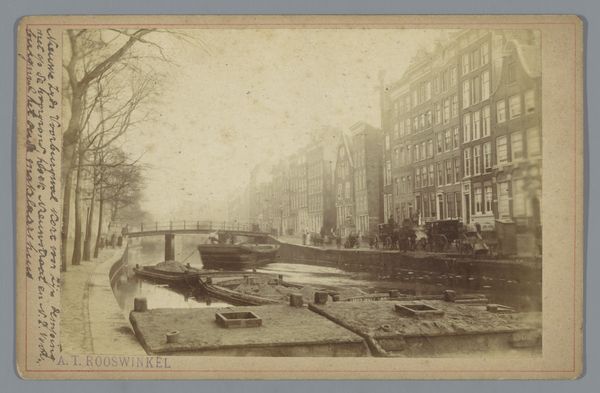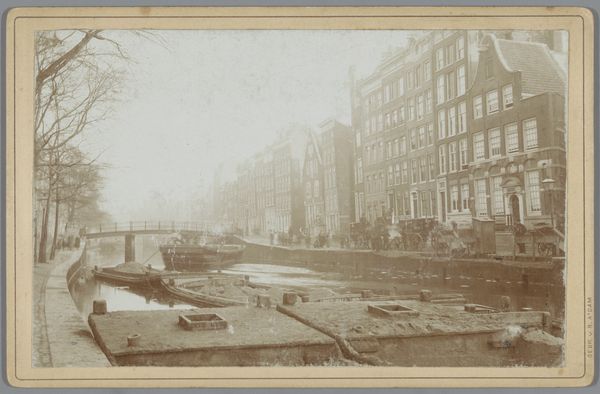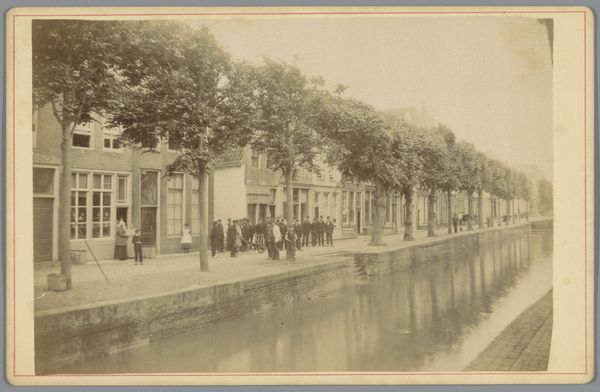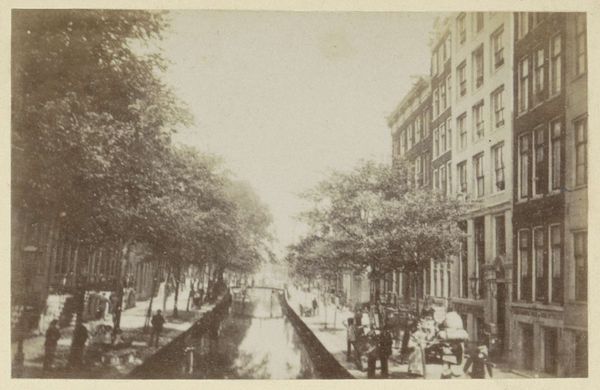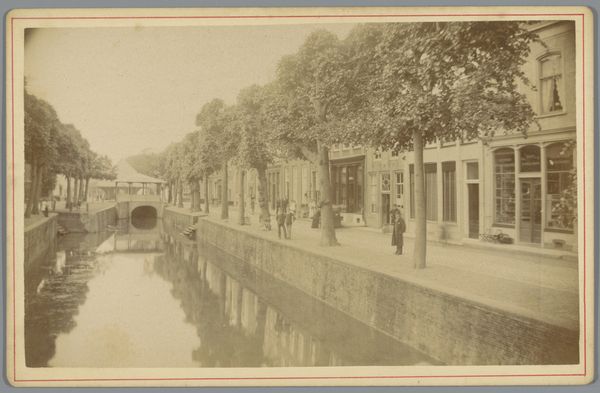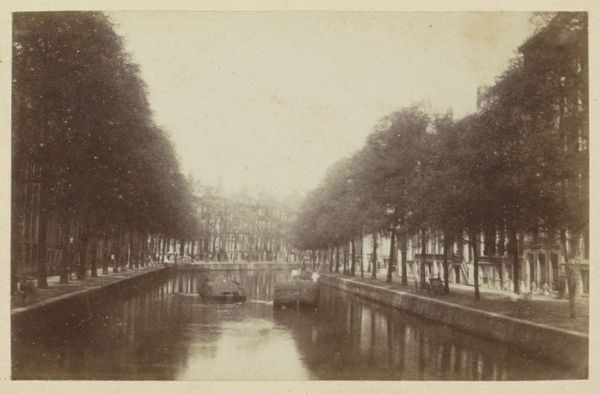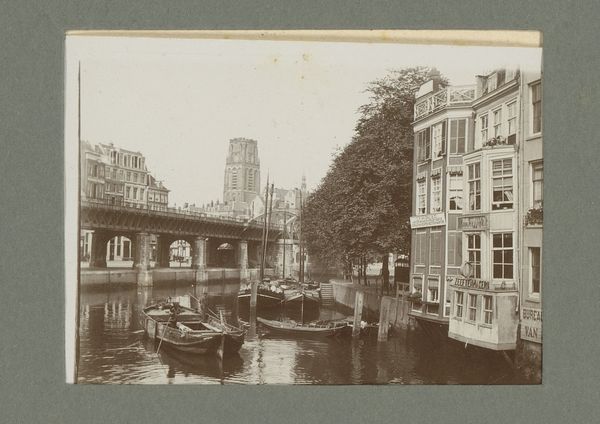
photography, gelatin-silver-print
16_19th-century
dutch-golden-age
photography
gelatin-silver-print
cityscape
watercolor
realism
Dimensions: height 107 mm, width 166 mm
Copyright: Rijks Museum: Open Domain
Curator: Let's discuss this fascinating gelatin-silver print, "Gezicht op de Warmoesgracht te Amsterdam" by Andreas Theodorus Rooswinkel. It was taken sometime between 1850 and 1894. Editor: It evokes such a somber mood, doesn't it? The sepia tones lend this melancholic feel, while the repetition of the buildings, trees and reflections creates a really strong composition. Curator: The printing process is crucial to understanding its appeal. Gelatin-silver prints like this allowed for mass production of images, opening up photography to a much wider audience. Think of it as democratizing image-making, moving it away from the elite portrait studios. Editor: It’s incredible to see Amsterdam so clearly represented through the repeating patterns of the gabled facades and arching trees, while water dominates. The reflections mirroring the solid forms give the canal such weight and stillness. Does it point toward any symbolic interpretation here, especially as the image freezes everyday activity on its edges? Curator: I’d say the image highlights Amsterdam as a trade center. You can observe a figure maneuvering a barge beneath a bridge, while numerous workers transport heavy looking loads alongside the canal. Its rigid geometrical and perspectival design speaks volumes of industry in Dutch life at this time. The canal wasn’t just picturesque; it was the lifeblood of commerce. Editor: That commerce brought new cultural symbols as well. What appears initially as a somewhat neutral depiction of a waterway shows human activities. Curator: And it’s vital to note that photographs such as this circulated widely. They contributed to constructing and shaping the Dutch identity, and the global image of the Netherlands as industrious. Editor: The photograph definitely reflects back at me something fundamental, as that kind of commercial, civic visual identity still marks Amsterdam today. Curator: Indeed. It serves as a tangible reminder of the social forces and means of production that shape a city. Editor: So from process to symbolism, both shape this view of Amsterdam and what the canal tells us about its era.
Comments
No comments
Be the first to comment and join the conversation on the ultimate creative platform.
